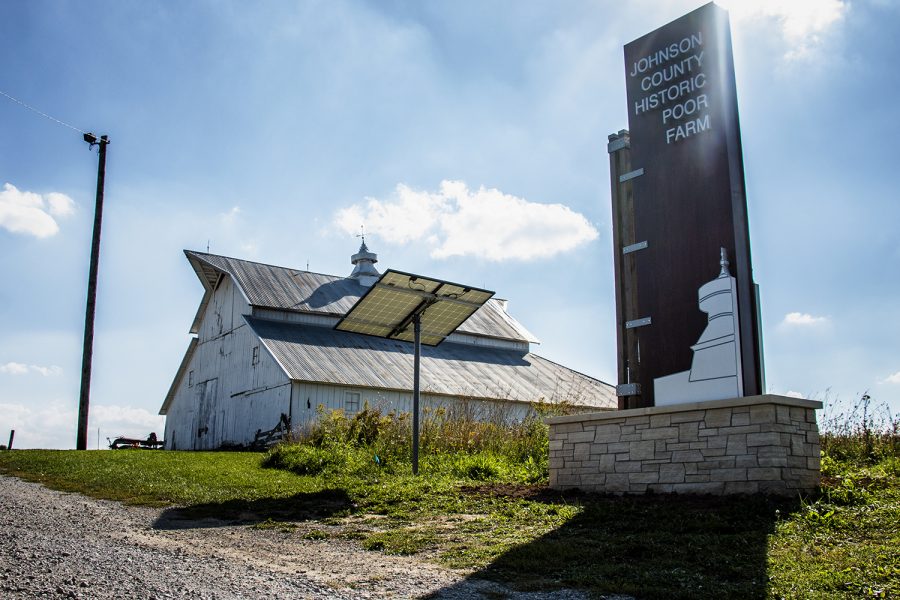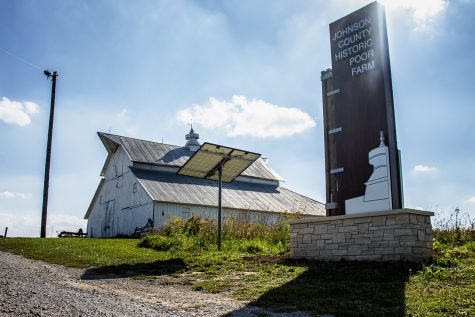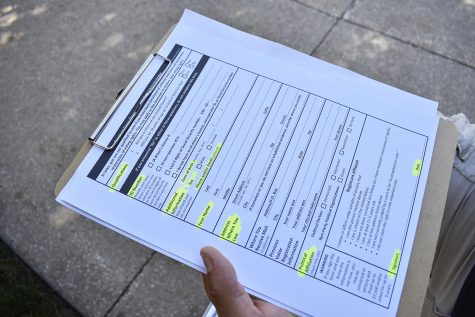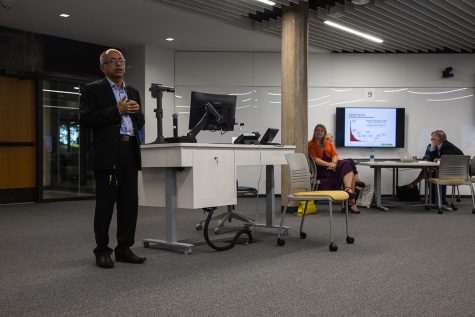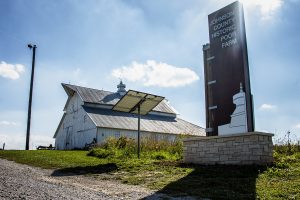Johnson County Historical Poor Farm bringing in charitable food production, low-income housing
The Johnson County Historical Poor Farm has had a long-winded past, but is becoming beneficial to the entire community.
The Johnson County Poor House is seen on Sept. 16, 2018. This historical landmark used to house inmates in the 1800s.
September 17, 2018
The Johnson County Historical Poor Farm, which opened in 1855, is in the process of undergoing a five-year project to restore the last buildings left standing on the property.
To help turn the Poor Farm into a self-sustaining property, the Johnson County Board of Supervisors has initiated a five-year plan.
According to a statement from the supervisors, the plan seeks to maintain the history of the standing buildings and unmarked cemetery, which holds more than 300 graves, while reintroducing charitable food production and low-income housing.
Grow: Johnson County is located on the site to provide access to healthy foods and create a site for charitable food for the food insecure. A global food project is also starting to grow non-native food for individuals who live in Iowa City but come from other countries.
County Supervisor Mike Carberry said the buildings on the site are in the process of being renovated.
“We’re restoring the west barn into a three-season event center,” he said. “But we have to be cognizant of the historic nature of the land.”
Sara Sedlacek, the communications and development director at the Johnson County Crisis Center, said she thinks that mental-health care, along with its stigma, has come a long way since the hey-day of the Poor House.
RELATED: County looks back at Poor Farm
“We know so much more about mental health now,” she said. “Instead of trying to hide people who have mental-health issues, we understand and believe that it is safer and healthier for people to be in their communities and be supported rather than be separated.”
The oldest building that remains was built in 1861 to hold what was once considered the mentally insane. Most of the people housed there were not actually insane, but they were deemed so because of the lack of medical knowledge. A lot of the individuals had Alzheimer’s, Parkinson’s, and dementia, said Alexandra McKendree, the executive director of the Johnson County Historical Society. People who were deemed as overly politicized or overly educated were also sent to the asylum.
McKendree said the Poor Farm provided a place for the homeless, displaced soldiers from the Civil War, farmers affected by a farming crisis, or farmers just starting out but not able to afford the farming lifestyle.
Poor farms had been popular on the East Coast and Europe as an alternative way of life for the poor and mentally ill, McKendree said. Historically, treatments for mental conditions were fairly brutal.
RELATED: Johnson County supervisors repurposing historic poor farm land
Before any sort of medical research was done, the mentally ill were sent to prison. Then came torturous procedures, such as trepanation, lobotomies, and hydrotherapy treatments. McKendree said the original idea of poor farms was to provide a way to try to help people as well as bettering the economy.
There are not complete records of what was performed at the Poor Farm, she said, but it was seen as more than just a mental facility. It was also a place for people to live out their lives.
“The idea for the poor farm is that they didn’t want people to be locked up,” McKendree said. “It was a place for people to live and a place for people to go.”



